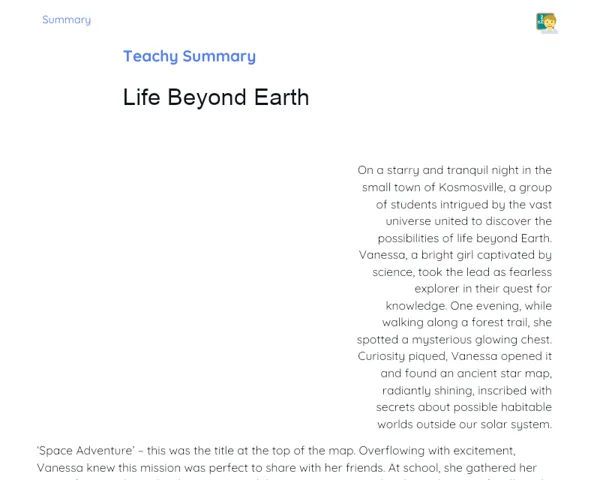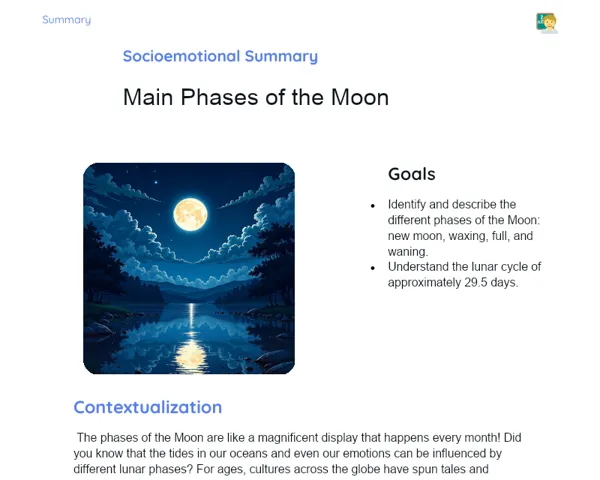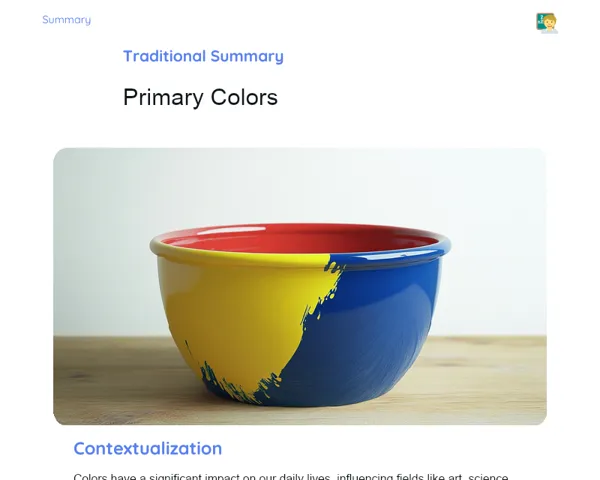Socioemotional Summary Conclusion
Goals
1. Grasp the significance of separation techniques both in everyday life and in scientific applications.
2. Cultivate the ability to choose and justify the most appropriate method for separating heterogeneous mixtures.
Contextualization
Have you ever tried to enjoy a cup of coffee full of grounds or thought about drinking unfiltered water? The separation of mixtures is a crucial technique we use daily, often without realising it! Just think of how the food industry or the manufacture of medicines would be affected without these processes. Let’s delve into this fascinating topic and see how we perform scientific wonders in our daily lives! 🌟🌱
Exercising Your Knowledge
Definition of Mixture
A mixture comprises two or more substances that do not chemically react with each other. Mixtures can be homogeneous, where the components are not visible to the naked eye and are evenly mixed, or heterogeneous, where the components can be seen and are not uniformly distributed. Understanding the nature of mixtures enables us to select the most effective method for separating them.
-
Homogeneous Mixture: Has a uniform composition where the substances blend completely. Example: saltwater.
-
Heterogeneous Mixture: Has a non-uniform composition where the components are easily identifiable. Example: sand mixed with water.
-
Importance: It’s essential to know the type of mixture so we can choose the right separation method. For example, filtration is ineffective for homogeneous mixtures.
Methods of Separation of Mixtures
There are several methods available for separating mixtures, each tailored for specific types and situations. Knowing which method to adopt in each case is key to successfully separating substances.
-
Filtration: Used to separate solids from liquids in heterogeneous mixtures. The solids are caught in the filter while the liquid passes through. Example: filtering tea or coffee.
-
Evaporation: Used to separate a solid from a liquid. The liquid evaporates, leaving the solid behind. Example: extracting salt from seawater.
-
Decantation: Used to separate liquids with different densities or a solid from a liquid. The lighter liquid settles on top while the denser liquid remains below. Example: separating oil from water.
-
Magnetism: Used to separate magnetic materials from non-magnetic ones. A magnet draws out the magnetic substance. Example: separating iron filings from sand.
Practical Applications
Separation techniques have widespread applications in our daily lives as well as in various industries. Recognising these applications illustrates the importance of science in our everyday experiences and aids in making informed choices.
-
Kitchen: We use filtration to brew tea or coffee and decantation to skim fat from soup.
-
Food Industry: Separation techniques are vital in food production processes, like extracting essential oils and purifying ingredients.
-
Pharmaceuticals: Separating mixtures is fundamental in obtaining pure chemicals necessary for drug manufacturing.
-
Environmental Sustainability: Separation techniques play a role in recycling materials, helping to sort various types of waste for reuse.
Key Terms
-
Homogeneous Mixture: Mixture with uniform composition, where the components are not visible.
-
Heterogeneous Mixture: Mixture with non-uniform composition, where the components can be seen.
-
Filtration: Separation method using a filter to remove solids from liquids.
-
Evaporation: Process where a liquid changes into gas, leaving solids behind.
-
Decantation: Method used to separate liquids with different densities or solids from liquids.
-
Magnetism: Technique using a magnet to separate magnetic from non-magnetic substances.
For Reflection
-
How can you use your knowledge about separating mixtures in everyday life to improve efficiency and sustainability?
-
Recall an instance when you collaborated in a group and faced emotional obstacles. How did you tackle it, and how could understanding emotional regulation have benefited you?
-
Reflecting on practical activities, what was the most significant challenge you faced and what emotional regulation strategy did you use or could have employed to manage it?
Important Conclusions
-
The separation of mixtures is an essential skill in daily life and science, significantly contributing to areas like cooking, food production, and pharmaceuticals.
-
Understanding different methods for separating mixtures, such as filtration, evaporation, decantation, and magnetism, is vital for selecting the right technique for each type of heterogeneous mixture.
-
Utilising these methods not only enhances the efficiency of our daily tasks but also contributes to sustainability and the quality of the products we consume.
Impacts on Society
The separation techniques we employ in our daily lives directly affect our quality of life. By filtering the water we drink or eliminating impurities from our food, we safeguard our health and wellbeing. Moreover, these techniques are crucial in recycling, aiding in the reduction of our ecological footprint by facilitating the effective reuse of materials.
On an emotional level, grasping and applying these techniques empowers us to make more responsible and informed choices. Knowing that our actions can promote sustainability and enhance the quality of life through simple daily habits, like sorting waste or filtering water, instils a sense of purpose and connection to the larger world. Feeling part of something significant brings about satisfaction and motivates us to continue learning and applying this knowledge in our lives.
Dealing with Emotions
To manage emotions while learning about separation techniques, I recommend using the RULER method. First, recognize your feelings as you engage with the material: are you feeling frustrated, curious, or excited? Next, understand the sources of these emotions—are you struggling to grasp a concept or do you feel confident after a successful experiment? Name these emotions accurately (like 'frustration' or 'satisfaction'). Then, express these emotions appropriately, perhaps by sharing your challenges or victories with a peer or teacher. Finally, look for ways to regulate these emotions, such as taking a break for deep breathing if you're feeling low, or celebrating small wins with a treat if you've made progress.
Study Tips
-
Conduct simple experiments at home, like separating sand from sugar using filtration, to visualise the concepts discussed.
-
Summarise the separation techniques in flashcards and review them regularly to reinforce your memory.
-
Collaborate with classmates in study groups to discuss and clarify doubts, as well as share various problem-solving strategies.



